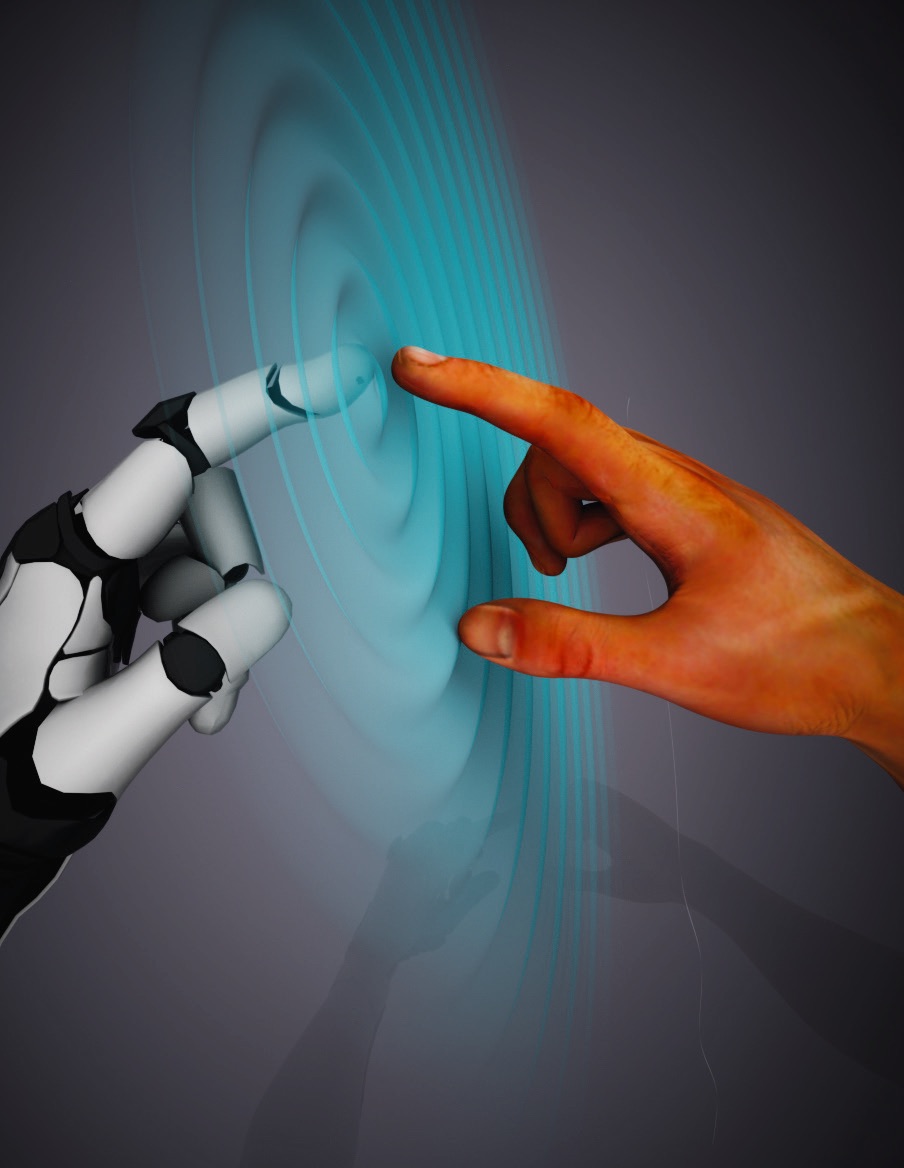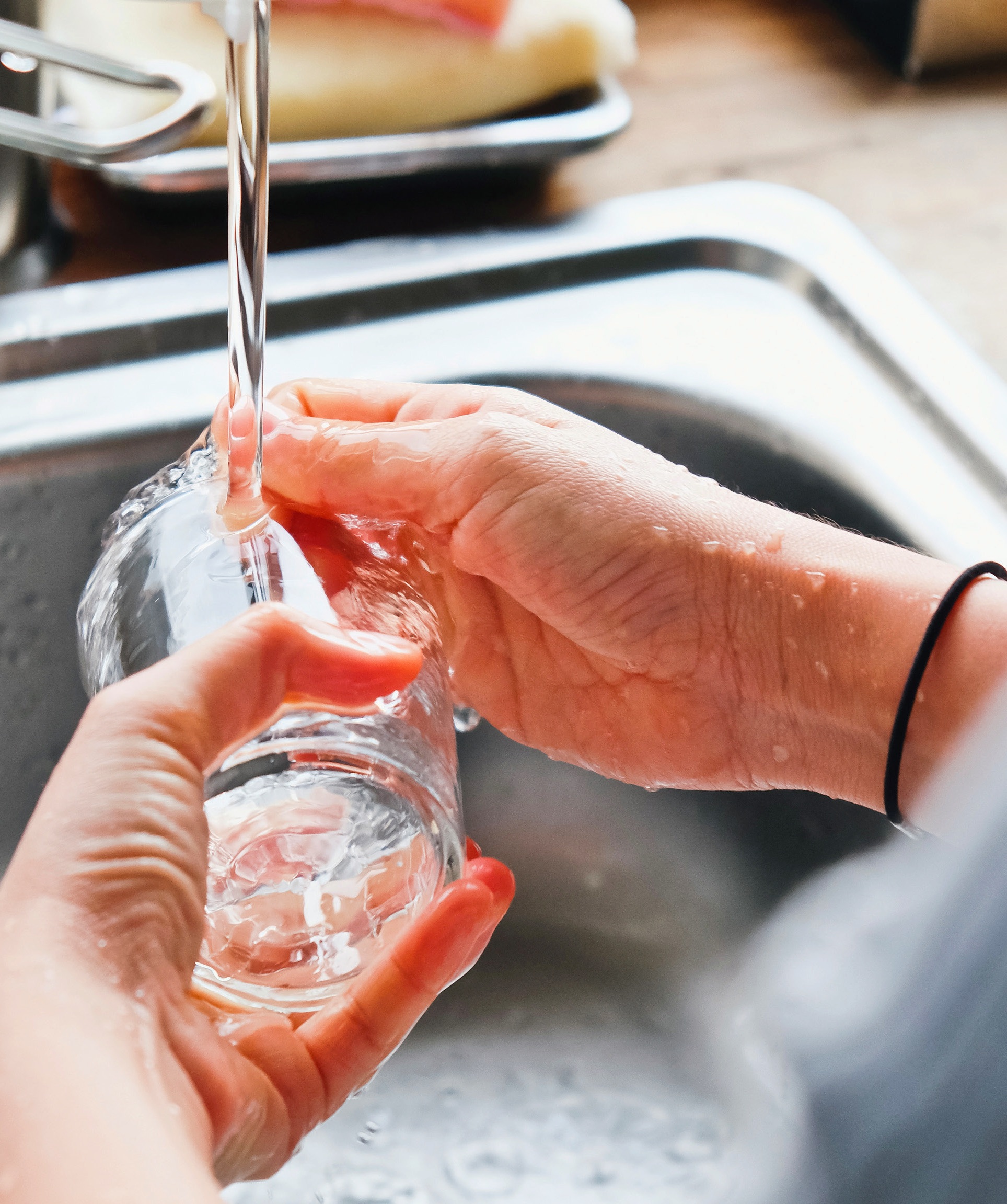KEY CONCEPTS
•
The growing use of robotics in manufacturing applications has led to a need to enhance their ability to grasp objects.
•
Elastohydrodynamic friction is present in a wet environment to enable a human finger to properly touch and then grip a surface.
•
A modified triborheometer was used to model elastohydrodynamic friction for various materials and geometries. This should open up opportunities to tailor the ability of robots to perform specific tasks in particular applications.
The ongoing Fourth Revolution is leading to the wider use of robotics in manufacturing applications. As part of this process, advances in artificial intelligence are leading to the growing use of robots that can make independent decisions to deal with problems that may occur in a manufacturing facility.
One of the areas, where a better understanding of robots is required, is to enhance their ability to grasp objects in a similar manner to humans. An important consideration is the frictional sliding that occurs when an individual or a robot grips a soft material (
see Figure 3), because it would allow faster and more accurate manipulation of non-ideal objects in realistic environments.
 Figure 3. Robots have trouble gripping objects in a wet environment where an elastohydrodynamic friction regime occurs. A new law has now been developed that can assist researchers with designing robots that can better handle elastohydrodynamic friction in specific applications. Figure courtesy of North Carolina State University.
Figure 3. Robots have trouble gripping objects in a wet environment where an elastohydrodynamic friction regime occurs. A new law has now been developed that can assist researchers with designing robots that can better handle elastohydrodynamic friction in specific applications. Figure courtesy of North Carolina State University.
Lilian Hsiao, assistant professor of chemical and biomolecular engineering at North Carolina State University in Raleigh, N.C., says, “If an individual runs a finger along a soft surface, initially the skin on the finger is deformed to generate a sensation, which then tells the brain how to adjust the grip accordingly. Normal and shear forces occur due to the presence of friction between the finger and the soft surface. In a wet environment, where a thin layer of a fluid such as water is situated between the surfaces, an elastohydrodynamic friction regime that can be hard to control for occurs.”
Hsiao explains that the human fingertip contains a high concentration of sensor receptors that will allow the individual to properly touch and then grip the surface. She adds, “Human fingerprints, whose function is still not entirely known, appear to enhance grip.”
Due to elastohydrodynamic friction effects, for a robot, accomplishing a simple task such as gripping an object is much more challenging. Hsiao says, “Robots have no internal ability to properly grip an object, particularly if it is wet. Teaching a robot to accomplish this task is similar to working with a child handling wet dishes. The initial outcome is the dishes will drop and break.”
In particular, the complexity of gripping forces is very apparent on a patterned surface, but proper control of these forces would advance robotic technology significantly. Hsiao says, “A patterned surface contains deformable textured objects that vary in length between tens and hundreds of microns. An example of such a surface is the patterns present in automobile tires.”
As Hsiao explored this issue, she realized that no theory is present to explain the elastohydrodynamic friction that is present when two patterned surfaces are separated by a thin liquid film. She says, “Past work to develop a theory for this phenomenon worked in some cases, but not all cases, depending upon the specific pattern and the materials used.”
Robots currently have contact points prepared from elastomer coated metals with increasing contact angles. They provide a soft touch but are not able to provide the proper feel for robots even when well-characterized surfaces and materials are used.
A new approach is needed to explain elastohydrodynamic friction when patterned surfaces come into contact with each other as a way to better equip robots to grip objects particularly in wet environments. Researchers have now developed a new law that can account for this type of friction.
Triborheometer
The first step in defining elastohydrodynamic friction was to generate data through the use of a stress-controlled triborheometer to measure the film thickness and coefficient of friction. When typically used for rheological measurements of fluids, this instrument can be modified for tribology experiments by using a ball-on-three plates geometry. The ball is at the top, and three plates are inserted in the bottom tray. Once this setup is ready, the ball is lowered and makes contact with three plates at a fixed normal force of 1.5 Newtons in the presence of a lubricant.
Values for film thickness and coefficient of friction were measured for four materials [poly(dimethylsiloxane), mercaptoester, polyester and poly(ethylene glycol) diacrylatealginate double-network hydrogel]. Each of these materials has a different Young’s moduli. Patterned surfaces consisted of raised stripes, and the lubricants used were mixtures of glycerol and water that provided a range of viscosities from 0.001 to 1.414 pascal-seconds.
Hsiao says, “Torque was measured by the triborheometer when the ball was rotated at sliding speeds ranging from 500 micronmeters per second to 35 millimeters per second. We developed Stribeck curves using this data that displayed a secondary bump in the elastohydrodynamic lubrication region. This bump is seen only with patterned surfaces but not with flat surfaces, which suggests that patterned surfaces might indeed provide more sensitivity for different objects in wet environments.”
Hsiao explained that the bump occurs due to a transitional coefficient of friction that is observed during a transition from micro-elastohydrodynamic to macroelectrohydrodynamic lubrication. She says, “This transition occurs as the lubricant fluid changes its direction of flow within the patterns when the speed is increased.”
 The human fingertip contains a high concentration of sensor receptors that will allow the individual to properly touch and then grip the surface.
The human fingertip contains a high concentration of sensor receptors that will allow the individual to properly touch and then grip the surface.
Using this theory, the researchers were able to model elastohydrodynamic friction for various materials and geometries. A follow-up experiment measured the dynamic normal and shear forces generated by three human fingertips during frictional sliding and compared them to a soft robotic finger sliding over the patterned surfaces used in the triborheometer study. The model was able to predict the elastohydrodynamic lubrication friction for both the human fingertips and the soft robotic finger.
Hsiao says, “The success of this model in explaining elastohydrodynamic friction on wet-patterned surfaces opens up opportunities to tailor the ability of robots to perform specific tasks in particular applications where the environmental conditions are known. A second application is the design of medical devices, for example, in remote applications, that need to handle objects in a wet, confined environment surrounded by soft biological tissue.”
The researchers will be working in the future to gain a better understanding of how new types of materials can be developed to better control lubricant film thickness and elastohydrodynamic friction. Hsiao’s collaborators include Veronica Santos, who is an expert in robotic platforms, as well as Yon Visell, who specializes in haptic technology. Additional information can be found in a recent article
1 or by contacting Hsiao at
lilian_hsiao@ncsu.edu.
REFERENCE
1.
Peng, Y., Serfass, C., Kawazoe, A., Shao, Y., Gutierrez, K., Hill, C., Santos, V., Visell, Y. and Hsiao, L. (2021), “Elastohydrodynamic friction of robotic and human fingers on soft micropatterned substrates,”
Nature Materials,
https://doi.org/10.1038/s41563-021-00990-9.